Best Orthotics for Kids with In-Toeing – Let’s Improve Your Child’s Posture by Preventing the Feet from Collapsing!
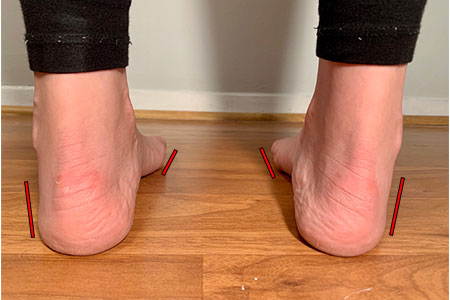
Intoeing, often referred to as “pigeon-toed,” is a common condition where a child’s feet point inward instead of straight when walking or running. If you have a child who has been diagnosed with intoeing and you already tried a pair of supportive shoes, your next step should be to try a pair of orthotics. As a shoe fitter with extensive experience in fitting children’s shoes and orthotics, I am going to show you the best orthotics for kids with intoeing to help improve your child’s foot posture and walking gait.
Orthotics for intoeing work by redistributing pressure on the feet, promoting even weight distribution, and correcting alignment issues. Moreover, they offer targeted support to specific areas of the foot, encouraging proper movement patterns.
What Do the Feet of a Child with Intoeing Look Like?
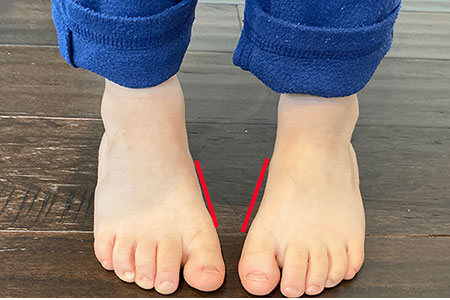
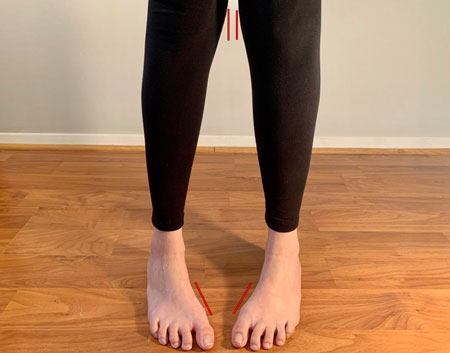
My Experience Helping Kids with Intoeing Find Shoes and Orthotics
At the shoe store where I work, there are a lot of physical and occupational therapists who refer families to the store to be fitted for supportive shoes and orthotics. The store specializes in fitting shoes and orthotics for children with foot and leg problems.
I get contacted by families from all over the world who are told by their medical professionals that their child will eventually outgrow the condition, but these families are still concerned since their child’s walking gait is clearly abnormal.
Don’t Leave Your Child’s Foot Condition Untreated – Be Proactive!
The first seven years of a child’s life are often referred to as the “golden years of treatment opportunity.” During this period, the foot and lower extremity structures are more malleable, and permanent changes can be more easily achieved through treatments like supportive shoes and orthotics.
Waiting for the condition to get corrected on its own might actually lead to the condition getting worse. Moreover, even though intoeing is one of the most common pediatric gait disturbances, your child might develop several complications if left untreated:
- An unbalanced gait
- Reduced athletic ability
- Foot deformities such as bunions, hammertoes, and flat feet
- Foot, leg, hip, and lower back pain
Can Orthotics Help Treat and Correct Intoeing?
Orthotics for intoeing help correct biomechanical foot issues such as problems with how your child walks, stands, or runs by providing additional support and a solid foundation to your child’s feet and legs. Something so simple such as providing your child with the correct type of shoes and orthotics can help correct your child’s walking gait and allow your child to walk and run straighter.
How Orthotics Help Improve Kids’ Foot Posture and Gait

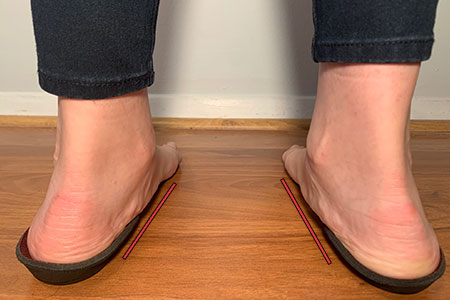
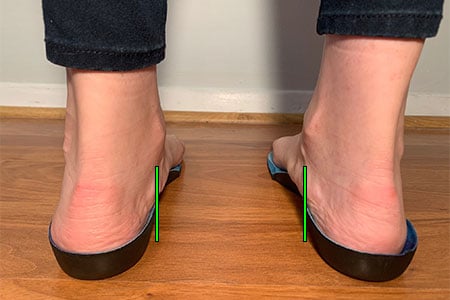
Before and After Images – Supportive Shoes and Orthotics

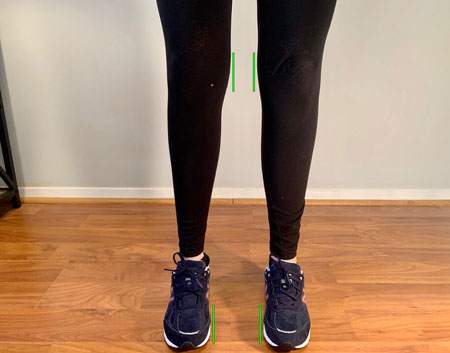
Choosing the Right Orthotics for Your Child
There are two orthotics that I recommend for intoeing, and the one that will work best for your child directly depends on the degree of your child’s intoeing.
- Mild: You notice that your child’s feet turn inward slightly instead of pointing straight ahead, but your child does not complain about any pain.
- Moderate: You notice that your child’s feet turn inwards instead of pointing straight ahead, and your child complains about foot or leg pain. Children with moderate intoeing have poor walking habits as their feet turn inwards at a considerable level.
- Strong: You notice that your child’s feet turn inwards considerably and your child complains about foot or leg pain. Children with strong intoeing show clear signs of poor walking habits.
Best Orthotics for Kids with Mild Cases of Intoeing
Footlogics orthotics are suitable for mild cases of intoeing and these inserts offer gentle correction and support, helping to improve foot posture over time.
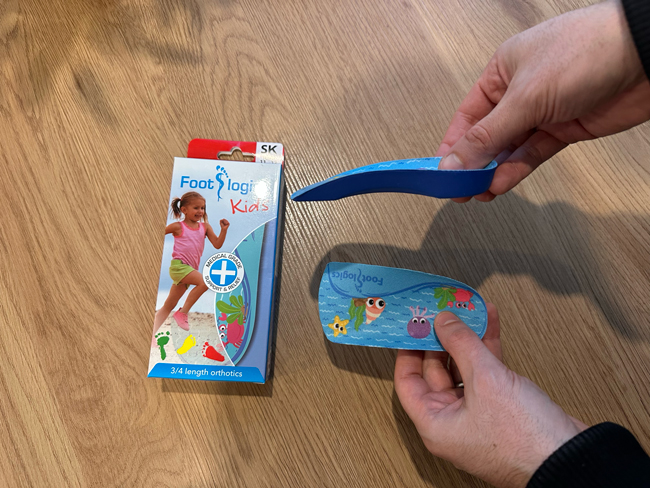
- Order the 3/4 length Footlogics orthotic inserts for toddlers on Amazon
- Fits toddler shoe size 5 through little kid shoe size 13
- 3/4 length makes it ideal to fit in most shoes
- They can be trimmed to the perfect size using scissors if necessary
- It’s not necessary to remove the original insoles of the shoes when fitting this orthotic
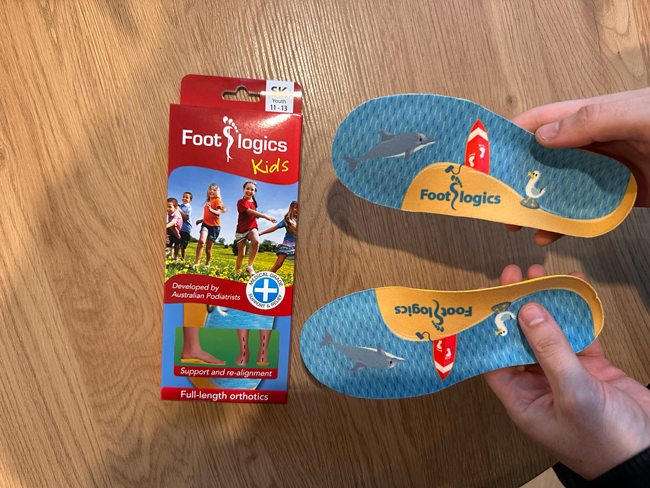
- Order the full-length Footlogics orthotic inserts on Amazon
- Fits toddler shoe size 5 up to big kid shoe size 3
- They can be trimmed to the perfect size using scissors if necessary
- You must remove the original insoles from your child’s shoes before placing the orthotic inside
Best Orthotics for Moderate or Strong Cases of Intoeing
For children with more pronounced intoeing, LittleSteps orthotics provide a stronger level of support and correction. These orthotics are designed to address more significant alignment issues and are tailored to meet the specific needs of a child’s feet. Moreover, by offering a higher degree of rigidity, LittleSteps orthotics can effectively guide the foot into a more corrected position, reducing strain and promoting a healthier gait.

- Order littleSTEPS® Orthotic Gait Plates from their official website. You must submit a Referral Code to complete your order: JVFCS100121
- It’s not necessary to remove the original insoles of the shoes when fitting this orthotic.
- The 3/4 length design makes it easier to fit into various shoe styles.
- Take a look at this chart to figure out what size to order based on your child’s shoe size.
Unsure About What Orthotic Will Work Best for Your Child’s Feet?
If you’re unsure about which orthotics might work best for your child, don’t hesitate to contact me for specific recommendations. With the myriad of options available, expert guidance can be invaluable in ensuring the right choice for your child’s needs. Moreover, my goal is to help you find the correct pair of shoes and orthotics that will make a difference in your child’s life, enhancing both their comfort and confidence.
What Makes the Orthotics I Recommend Effective for Intoeing?
The best orthotics for intoeing provide these two key features:
1. Targeted arch support helps control foot pronation (inward rolling of the foot). This support is essential in maintaining balance and reducing strain on muscles and ligaments.

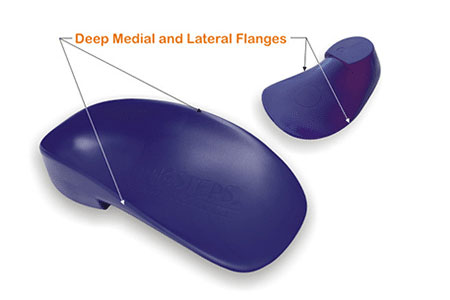
2. Deep heel cups help provide overall foot support and control heel and lower leg alignment:
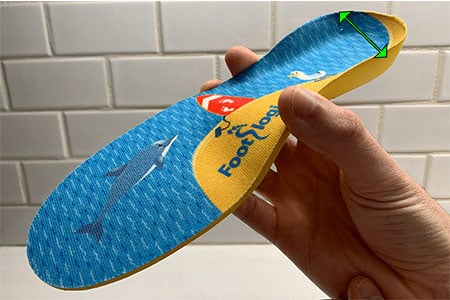
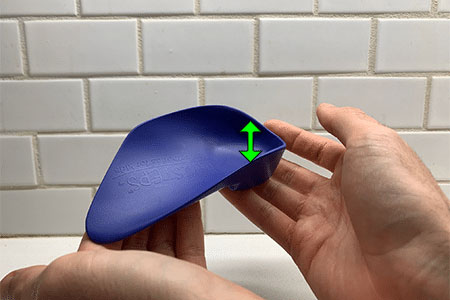
What Are the Best Sneakers for Kids Who Wear Orthotics?
The right footwear can make a significant difference in the effectiveness of orthotics, ensuring they provide the necessary support and correction. However, keep in mind that the shoes and the orthotics work together when it comes to treating your child’s intoeing. This means that if you provide your child with a pair of the orthotics that I recommend but the shoes are not supportive enough, your child won’t be able to get the full benefits that the orthotics have to offer, and vice versa. I created a different resource that has a list of deep and supportive shoes for orthotics.
Some occupational therapists might recommend casts, orthopedic shoes, and even surgery to help treat and correct intoeing. These three approaches might not always be effective, and providing your child with the correct type of shoes and orthotics is a less invasive alternative that will help treat and prevent your child’s intoeing.
As a passionate shoe fitter, my mission is to guide parents in finding the best footwear and orthotic solutions for their children. Finally, by selecting the right shoes and orthotics, you can help your child walk with confidence and comfort.

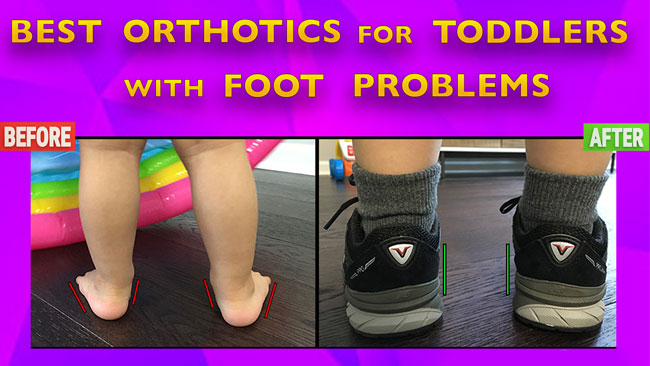
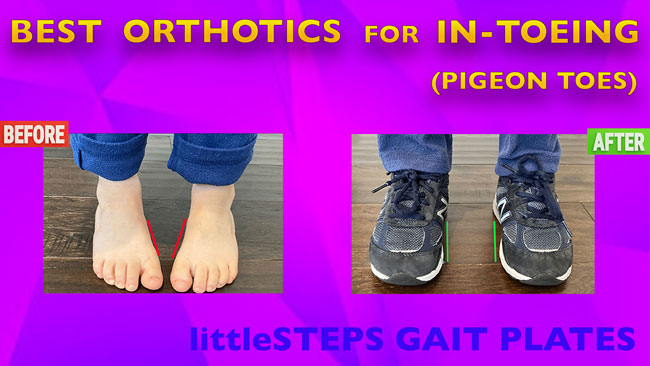

Hi my son is 15 years old and size 7 men shoes and when he was younger at blue insole for shoes but need to get new ones as he walk in toe/pigeon toe so I order size 8 which is us men size 6-7.
Hello Natalia,
I am not sure that I understand your question. Are you trying to figure out what blue Superfeet insole you should get for your son?
I want to order blue insoles for intoe child but is in size is 7 men what size insole intoe one do I order.
Hello Natalia,
If your son wears a men’s shoe size 7 I suggest that you get the blue Superfeet insoles in the size range “5.5-7 Mens”. I selected the correct size here: Superfeet Insole
PLEASE, my 16 mo. old has pretty bad bow-legging & in-toeing (esp. the left foot) & NO shoes will stay on him for long without his heals working their way out. Not to mention how often he trips & stumbles. Due to the weird slope of his heels its hard to even get them into a shoe to begin with. Problem is there are no children’s shoe stores where we live. Where do I take him? The pediatrician?
Hello Meg —
As far as getting your son fitted for orthotics or another treatment I suggest consulting your medical professional.You can start with your pediatrician or physical therapist.
As far as shoes concern, is your son wearing shoes with shoelaces or velcro closure? Are you sure the shoes were not fitted too big? There is a specific shoe lacing technique that helps keep the shoes in place and prevent them from slipping out the child’s feet.
Start by taking a look at this article: How to Measure Your Kids’ Foot – 2 Simple Steps to Determine Foot Length and Foot Width that way I can get a better idea of your son’s foot shape and we can check wether your son is wearing shoes in the correct length and width.
In that email please include what type of shoe your son is currently wearing.
I’m having this same issue. Has your son conditions improved through the shoes? Mine is turning 17months and has bowed leg and intoeing. Chiropractor has helped his hip and some of the issues but his intoeing continues to cause bowing of his leg and he falls and trips every 5min.